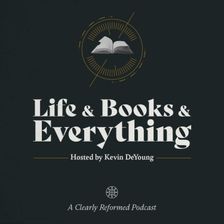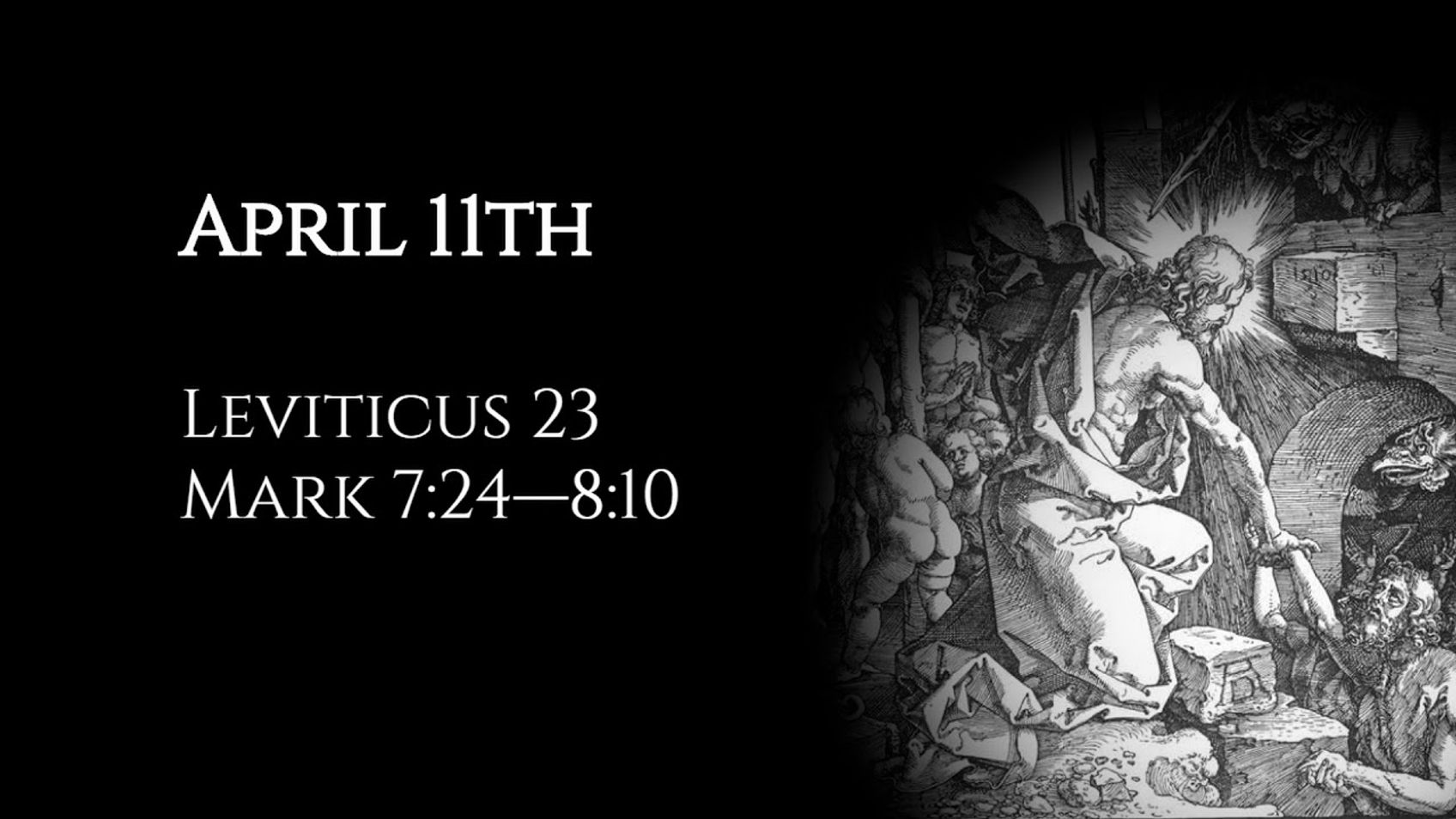April 11th: Leviticus 23 & Mark 7:24—8:10

The festal calendar of Israel. Jesus ministers to Gentiles.
Some passages referenced:
Exodus 31:12-17 (Sabbath as the sign of the covenant); Exodus 12:2 (the first month designated as a result of the Exodus); Numbers 28—29 (the appointed sacrifices for each feast); Exodus 16 (the gift of the manna, an omer a day); Joshua 5:10-12 (the cessation of the manna and food from the land); Numbers 15:2-5 (the law for the grain offering of a burnt offering of a lamb); Leviticus 2:14-16 (the manner of the grain offering); Leviticus 2:11 (prohibition upon leaven in grain offerings); Leviticus 25:8 (the Year of Jubilee); Acts 2 (the Day of Pentecost); Zechariah 14:9, 16-19 (the Feast of Booths and the nations); Numbers 29:12-34 (the sacrifices of the Feast of Booths); Exodus 12:37 (camping at Succoth); Exodus 13:20-22 (the pillar of cloud and fire at Succoth); Exodus 12:39 (the Feast of Unleavened Bread first celebrated at Succoth).
Isaiah 35:5-6 (prophecy concerning the healing of the deaf, dumb, and blind); Mark 8:22-26 (parallel account of healing the blind man).
Reflections upon the readings from the ACNA Book of Common Prayer (http://bcp2019.anglicanchurch.net/).
If you have enjoyed my output, please tell your friends. If you are interested in supporting my videos and podcasts and my research more generally, please consider supporting my work on Patreon (https://www.patreon.com/zugzwanged), using my PayPal account (https://bit.ly/2RLaUcB), or by buying books for my research on Amazon (https://www.amazon.co.uk/hz/wishlist/ls/36WVSWCK4X33O?ref_=wl_share).
The audio of all of my videos is available on my Soundcloud account: https://soundcloud.com/alastairadversaria. You can also listen to the audio of these episodes on iTunes: https://itunes.apple.com/gb/podcast/alastairs-adversaria/id1416351035?mt=2.
More From Alastair Roberts
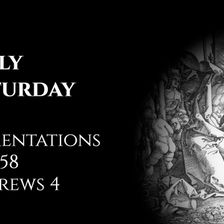
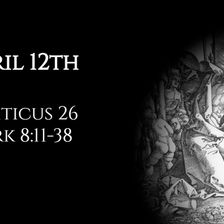
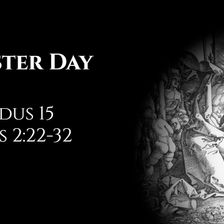



More on OpenTheo







